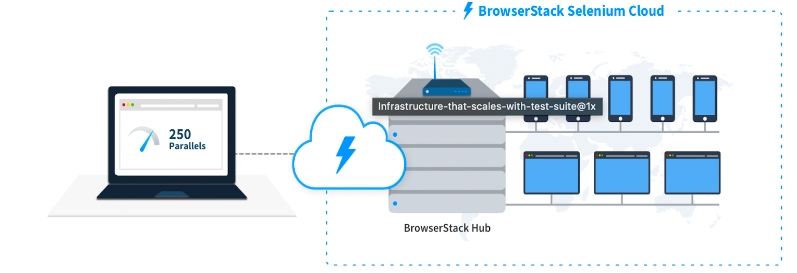Static Testing vs Dynamic Testing
December 3, 2024
There are two key approaches to software testing: static testing and dynamic testing. Both play a vital role in ensuring the quality of your software, but they tackle the process differently.
This article explains static and dynamic testing in detail and their differences, enabling you to build better, more reliable software.
- Static Testing vs Dynamic testing
- What is Static Testing?
- Advantages of Static Testing
- Disadvantages of Static Testing
- Static Testing Techniques
- What is Dynamic Testing?
- Advantages of Dynamic Testing
- Disadvantages of Dynamic Testing
- Dynamic Testing Techniques
- White Box Testing
- Black Box Testing
Static Testing vs Dynamic testing
TL;DR
Static testing focuses on reviewing and analyzing code without actually running it, catching issues early. Dynamic testing, on the other hand, involves executing the code to find bugs during runtime.
| Static Testing | Dynamic Testing |
|---|---|
| It is performed in the early stage of software development | It is performed at the later stage of the software development. |
| Testing is done without executing the program | Testing is done by executing the program |
| Also known as Verification testing | Also known as validation testing |
| It consists of reviews, walkthroughs, inspection, etc., | It consists of functional and non-functional testing, and data/control flow analysis. |
| Static testing assesses code and documentation | Dynamic testing gives bugs/bottlenecks in the software system. |
| Performs a dry run on the code as part of the static analysis. | Code is fully analyzed for different paths by executing it. |
| It generally takes a shorter time. | It usually takes a longer time as it involves running several test cases. |
| Static testing covers structural and statement coverage testing. | Dynamic testing covers the executable file of the code. |
| It includes requirement documents, design documents, program specifications, etc., | It includes unit testing, integration testing, system testing, performance testing, security testing, etc., |
What is Static Testing?
Static Testing is software testing where the actual program or application isn’t used. This testing method requires programmers to manually read their code to search for errors. Static testing is a stage of White Box Testing called dry run testing. Testing a program does not require a computer, for example, reviewing, walk-through, inspection, etc.
- This testing checks the code, requirement, and design documents and puts review comments on the Word document.
- It enhances the software’s standard by searching for errors, code flaws, and potentially malicious code within the application.
- It starts earlier in the SDLC and is called Verification Testing.
- Static testing is done before the code is executed early in the development process. This makes it different from dynamic testing, done after the code is executed.
- Static testing can be done using requirements specifications, design documents, source code, test plans, test scripts, test cases, or web page content.
It’s never-ending activity and not done just by testers.
Advantages of Static Testing
- Static testing allows for the early detection of defects in the software development lifecycle. By reviewing artifacts before execution, issues can be identified and resolved at an early stage, saving time and effort later in the development process.
- Static testing is generally more cost-effective than dynamic testing techniques, such as manual or automated testing.
- It identifies coding errors, syntax issues, and adherence to coding standards, resulting in cleaner, more maintainable code.
- Static testing involves collaboration and knowledge sharing among team members. It allows developers, testers, and stakeholders to review and discuss project artifacts, enhancing communication and understanding of the software requirements and design.
Disadvantages of Static Testing
- It may not uncover all the issues that could arise during runtime.
- Some defects and issues may only appear during dynamic testing when the software runs.
- The effectiveness of static testing heavily relies on the reviewers’ skills, experience, and knowledge.
- Static testing can be time-consuming, especially for large or complex projects.
- Relying solely on static testing without complementing it with dynamic testing can create a false sense of security, as some defects may only manifest during the execution of the software.
Static Testing Techniques
Here are the different Static Testing Techniques that are used during the verification process:
- Informal Reviews
In the informal review, all documents are presented to every team member by SRS document creator. Everyone presents their views on the defects, which leads to detecting defects in the early stages.
- Walkthroughs
To avoid unnoticed defects or bugs, a walkthrough review is performed by experts or skilled people.
- Technical/Peer Reviews
All the software product’s technical specifications are reviewed by a team of your peers, which checks whether it is suitable for the project. Everyone tries to find out if there are any discrepancies in the specifications and standards. This is mainly based on the technical documentation related to the product, such as Test Plan, Test Strategy, and requirement specification documents.
- Inspection
This review is a formal type of review that follows a strict process to find the defects. Reviewers have a checklist to review the software or product. The main purpose is to find out defects and the meeting is led by a moderator who is trained in this. Every defect is recorded and they informed the participants to rectify those errors.
This is also termed as a part of white box testing. This is a systematic review of the software source code without executing the code. It checks the syntax of the code, coding standards, code optimization, etc. It can be done at any time during the development process.
What is Dynamic Testing?
Dynamic testing is a kind of software testing that involves the execution of action on a system. In contrast, the system code is compiled in an exceedingly run-time environment. It is a technique for assessing the feasibility of a software program by giving input and examining the output.
The foremost aim is to ensure that software works appropriately during and after the installation, ensuring stability with no significant flaws.
- Dynamic testing that Validation a part of the Verification and Validation process.
- It is slightly more complex than typical software testing as it requires the testers to possess deep knowledge about the system and its inner workings and understand how it reacts when given inputs are given.
- It fetches better and more realistic results than static testing.
- It also helps find bugs that can not be found with normal software testing and be used for regression tests.
Repeated regression testing helps find application failures well before release deadlines. But as your application grows, so does your regression test suite. With BrowserStack, access infrastructure of 3000+ real mobile devices and desktop browsers on the cloud.
Advantages of Dynamic Testing
- It reveals runtime errors, memory leaks, performance bottlenecks, security vulnerabilities, and other issues that only become apparent during execution.
- It provides a more accurate assessment of the quality and reliability of the software. It verifies that the software functions as intended and meets the specified requirements, ensuring it performs correctly in different usage scenarios.
- It helps verify the integration of modules, APIs, databases, and external dependencies, ensuring the system functions seamlessly.
Disadvantages of Dynamic Testing
- Dynamic testing can be time-consuming, especially for complex systems or large test suites.
- It may not cover all possible scenarios and combinations due to the vast number of potential inputs and execution paths.
- It requires significant effort and time to debug and pinpoint the exact cause, especially in complex systems.
- Dynamic testing can be challenging when testing exceptional or rare conditions that are difficult to simulate.
Dynamic Testing Techniques
The dynamic testing of any component or system is approached in 2 different ways.
- White Box Testing
- Black Box Testing
White Box Testing
White Box Testing, also known as clear box testing or glass box testing, is a form of black box testing, in which the inputs and expected outputs are known in advance. In White Box Testing, test cases are derived from the source codes.
The developers perform white-box testing; they know the underlying system, messaged the internal workings, and know the code line by line.
Once the white box testing is done, the software is sent to do the following process, like black box testing.
Black Box Testing
This is done by a team of testers unaware of a system’s underlying code. The goal is to check whether the system is working as it should against any input. They check whether the system produces the expected output according to the requirements. This is performed by the testers or the testing team who are unaware of the built and codes of the system. They should only be aware of software specifications and requirements.
The Black Box testing is further divided into-
- Functional Testing
- Non-functional Testing
Functional Testing
This type of testing aims to evaluate how well the software functions in the hands of somebody who is not a programmer.
- Functional testing ensures that the software developed is doing what it should.
- The focus is on the specifications of the system.
- The components are tested individually as well as combined.
- It verifies the expected outputs from inputs. This includes- Unit Testing, Integration Testing, System Testing, and User Acceptance Testing.
Non-Functional Testing
Non-functional Testing is a type of system testing that focuses on the non-functional aspects (performance, load, and response time) of a software application.
- These tests are used to ensure that the system meets its functional requirement and has a good user experience.
- Non-functional testing also includes security testing, cross-browser compatibility testing, scalability testing etc.
Follow-Up Read: Functional and Non-Functional Testing Checklist
Difference Between Static and Dynamic Testing
| Static Testing | Dynamic Testing |
|---|---|
| It is performed in the early stage of software development | It is performed at the later stage of the software development. |
| Testing is done without executing the program | Testing is done by executing the program |
| Also known as Verification testing | Also known as validation testing |
| It consists of reviews, walkthroughs, inspection, etc., | It consists of functional, and non-functional testing, and data/control flow analysis. |
| Static testing assesses code and documentation | Dynamic testing gives bugs/bottlenecks in the software system. |
| Performs a dry run on the code as part of the static analysis. | Code is fully analyzed for different paths by executing it. |
| It generally takes a shorter time. | It usually takes a longer time as it involves running several test cases. |
| Static testing covers structural and statement coverage testing. | Dynamic testing covers the executable file of the code. |
| It includes requirement documents, design documents, program specifications, etc., | It includes unit testing, integration testing, system testing, performance testing, security testing, etc., |
Conclusion
In conclusion, Static testing is an essential part of the software development process and is not just limited to testers. It takes the form of business requirement reviews, functional requirement reviews, design reviews, code walkthroughs, and test documentation reviews. It is a continuous activity and not done just by testers.
Dynamic testing is a more hands-on activity than static testing. It involves working with a product in real-time and not just reviewing documentation or artifacts. The dynamic testing phase of validation is also more formal than static testing and involves test cases and defect reporting.
Dynamic testing for web or mobile applications can be performed manually or through automation using tools like BrowserStack. With access to over 3,500 real devices and browsers, it provides seamless integration with various testing workflows. BrowserStack delivers efficient solutions for both manual and automated testing, ensuring thorough coverage and reliability.




